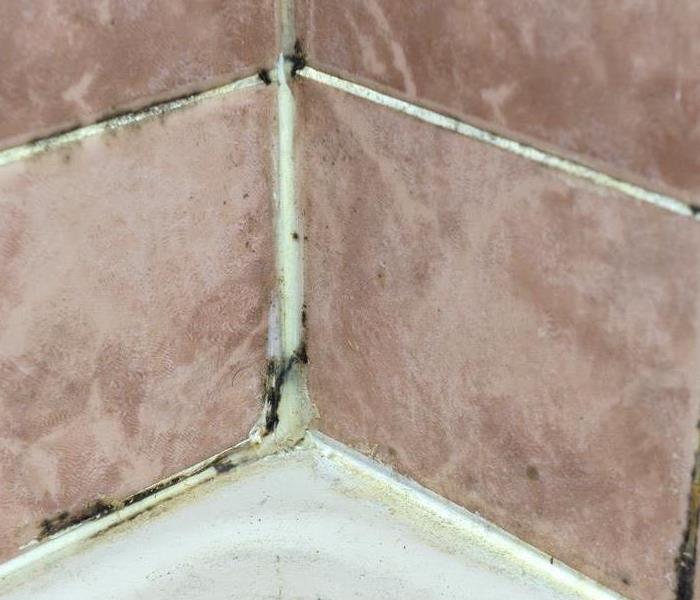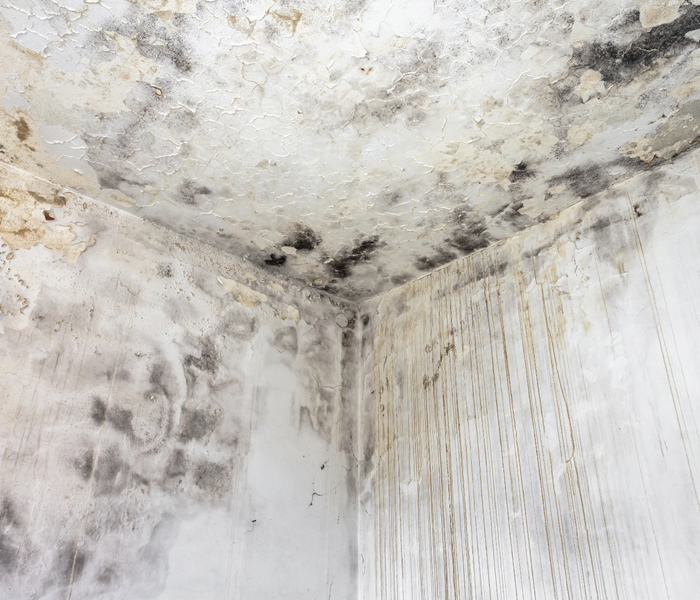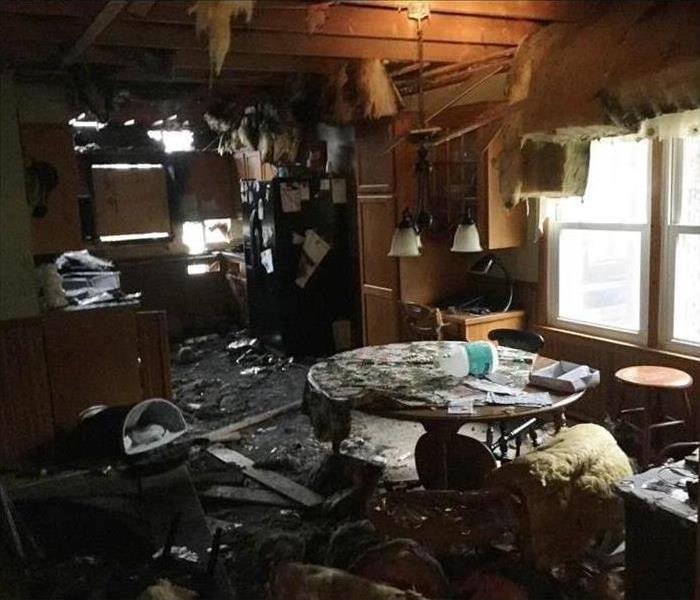Archived Mold Remediation Blog Posts
Mold in Vacation Homes: Prevention for Seasonal Properties
10/24/2023 (Permalink)
 Controlling moisture in your vacation home while away is crucial to prevent mold and mildew to grow.
Controlling moisture in your vacation home while away is crucial to prevent mold and mildew to grow.
Owning a vacation home provides a retreat from the daily grind, but the lack of year-round occupancy can create a conducive environment for mold growth. Mold thrives in damp and stagnant conditions, making seasonal properties vulnerable to infestations. In this blog, we will explore effective prevention strategies for mold in vacation homes, ensuring a clean and comfortable environment for your getaway.
Control Moisture and Humidity
Moisture control is crucial in preventing mold growth in vacation homes. Before closing up your property, thoroughly inspect for any leaks or signs of water damage and promptly repair them. Ensure that the property is properly sealed and insulated to prevent moisture intrusion. Installing a dehumidifier can help control humidity levels during periods of vacancy, preventing excess moisture buildup. Additionally, consider leaving the blinds or curtains open to allow natural light and airflow, as sunlight can inhibit mold growth. By actively managing moisture and humidity, you can greatly reduce the risk of mold in your vacation home.
Clean and Dry Thoroughly
Thorough cleaning and drying are essential steps in preventing mold growth in seasonal properties. Before closing up for the season, deep clean all surfaces, including furniture, carpets, and bathrooms. Pay special attention to areas prone to moisture, such as bathrooms and kitchens. Ensure all surfaces are completely dry before sealing the property, as even small amounts of residual moisture can promote mold growth. If any water damage occurs during the season, address it promptly and thoroughly dry the affected area to prevent mold from taking hold. Regular cleaning and drying practices will help keep your vacation home mold-free.
Ventilate the Property
Proper ventilation plays a vital role in mold prevention for vacation homes. When closing up the property, open windows and doors to allow for air circulation and prevent stale air from becoming trapped inside. Consider using fans or leaving ceiling fans on a low setting to promote airflow during the off-season. If the property has a ventilation system, check that it is functioning properly and clean or replace filters as necessary. Adequate ventilation minimizes the accumulation of moisture and helps create an inhospitable environment for mold growth.
Regular Inspections and Maintenance
Regular inspections and maintenance are key to preventing mold growth in vacation homes. Schedule routine check-ups before and after each season to identify any signs of water damage, leaks, or areas of excessive humidity. Inspect the property's roof, gutters, and plumbing system for any issues that may lead to moisture problems. Additionally, monitor the property during the off-season for any signs of mold growth or musty odors. Promptly address any maintenance or repair needs to prevent further moisture infiltration and mold development. By staying vigilant and proactive, homeowners can catch and resolve potential mold issues before they become significant problems in their vacation homes.
Preventing mold in vacation homes requires proactive measures to manage moisture and ensure proper ventilation. By controlling moisture and humidity, thoroughly cleaning and drying the property, and promoting air circulation, homeowners can avoid the unpleasant surprise of mold infestations in their seasonal properties. Implementing these preventive strategies will help preserve the cleanliness and integrity of your vacation home for years to come.
Mold vs. Mildew: Understanding the Key Differences and How to Deal with Them
5/25/2023 (Permalink)
 Mold vs Mildew, should be addressed immediately.
Mold vs Mildew, should be addressed immediately.
Mold and mildew are both types of fungi that can grow in damp, warm environments and can be found in various parts of our homes, such as bathrooms, basements, and kitchens. While they may appear similar and are often used interchangeably, there are some key differences between mold and mildew that are important to understand in order to effectively identify and manage them. In this blog, we will explore the differences between mold and mildew.
Definition and Appearance
Mold is a type of fungus that can grow in various colors, such as black, green, or gray, and has a fuzzy or slimy texture. It can penetrate the surface it grows on and can spread easily, both horizontally and vertically. Mold tends to grow in areas with high moisture content, such as water-damaged walls, damp basements, and areas with poor ventilation.
On the other hand, mildew is a type of mold that is specifically identified by its appearance. Mildew is usually white or gray and has a powdery texture. It typically grows on the surface of damp materials, such as bathroom tiles, fabrics, or paper, and is commonly found in bathrooms, kitchens, and other areas with high humidity.
Growth Conditions
Both mold and mildew thrive in damp, warm environments. However, there are some differences in the specific conditions that favor their growth.
Mold typically grows in areas with high moisture content, such as water-damaged walls, leaky pipes, or areas with poor ventilation. It can also grow on organic materials, such as wood, paper, and fabric, and can withstand a wide range of temperatures.
Mildew, on the other hand, tends to grow on the surface of damp materials, such as bathroom tiles, shower curtains, or fabrics, and is commonly found in areas with high humidity, such as bathrooms, kitchens, and basements. Mildew is more commonly found on non-organic materials and prefers a relatively cooler temperature compared to mold.
Cleaning and Prevention
Both mold and mildew should be addressed promptly to prevent further growth. Here are some key steps for cleaning and preventing mold and mildew.
- Clean mildew-infected surfaces with a solution of water and mildew-specific cleaner, which can be found in most grocery or hardware stores.
- Use a scrub brush or a sponge to scrub the affected area thoroughly, making sure to remove all visible traces of mildew.
- Rinse the area with clean water and dry it thoroughly to prevent further moisture buildup.
- Increase ventilation in the affected area by using exhaust fans, opening windows, or using a dehumidifier to reduce humidity levels.
- Avoid leaving damp materials, such as towels or clothes, lying around, and promptly fix any leaks or water damage to prevent future mildew growth.
- Regularly clean and dry surfaces prone to mildew growth, such as bathroom tiles, shower curtains, and window sills, to prevent mildew from returning.
In both cases, it's essential to address the source of moisture and ensure that the affected areas are thoroughly cleaned and dried to prevent further growth of mold or mildew.
Damage Potential
Mold can cause more significant damage compared to mildew due to its ability to penetrate surfaces and spread rapidly. It can cause structural damage to buildings, furniture, and other materials it grows on, and may require professional remediation in severe cases.
Mildew, on the other hand, is typically limited to surface growth and does not penetrate materials like mold does. However, if left untreated, mildew can still cause discoloration and damage to surfaces, especially porous materials such as fabric and paper.
In summary, while mold and mildew are both types of fungi that can grow in damp, warm environments and have some similarities, they have distinct differences in terms of appearance, growth conditions, cleaning and prevention methods, and damage potential.
Dealing with Mold After a Fire
12/12/2022 (Permalink)
 House fire
House fire
A fire is a traumatic event, and if you've experienced one, you know that it can be difficult to deal with the aftermath. Along with structural damage, smoke and soot can cause mold growth in your home's walls, ceilings, and floors. If not dealt with quickly — and properly — mold growth will spread throughout your home and make rebuilding more expensive than necessary.
Mold can grow after a fire if the area is not dried quickly enough.
Mold is a fungus that grows on organic materials. To grow, it needs moisture and oxygen. It can be found everywhere in nature, but it's difficult to spread without the help of humans.
For example, after a fire occurs in your home, you will have an opening in one of the walls where smoke and heat have damaged the drywall. If this wall isn't repaired quickly enough (and if there are other factors that allow moisture to enter), mold spores could start growing on exposed wood or other materials inside your home.
How mold spreads after a fire.
In addition to the immediate damage caused by fire, there's also the potential for mold growth. Mold spores are everywhere, but a fire creates an environment that makes it easy for them to grow.
If you have a house fire and you're concerned about your home's susceptibility to mold growth, don't fret: there are ways you can ensure that your home doesn't become infested with mold after a fire.
What to do with the contents:
The contents of the room should be removed and discarded if they cannot be cleaned. If they can be cleaned, wash them in hot water and detergent, then dry them in a well-ventilated area. Do not use bleach or other harsh chemicals to clean things like clothes that may have been exposed to smoke or mold spores during the fire. Once everything has been thoroughly cleaned and dried, leave the door open so that air can get in and out of the room for several days until it is completely dry again.
The Fire Damage Restoration Process Includes Mold Remediation
The time it takes for mold to grow in your home depends on a variety of factors, including the size of the room, how much water is present and whether there was smoke damage. In general, however, it grows faster than you might think: 48 hours is common for indoor environments.
Mold is not only unsightly and may even affect your health, but also expensive to remove once it has set in—and insurance companies won't cover it unless they deem it an "act of God" (which can be hard to prove). Even if you do have insurance coverage for fire damage or other structural issues that resulted from a fire event (or any other emergency), you'll want to know what types of materials are covered so that you don't end up paying out-of-pocket just because something wasn't explicitly covered under your policy.
If you're concerned about whether there's visible evidence of mold after an emergency has occurred at home or work—or if there's reason to believe that such contamination could be imminent—call us today!
Call a professional fire restoration company to restore your home after a fire.
You should call a professional fire restoration company to restore your home after a fire.
- Mold can grow fast in a fire-damaged home and spread quickly if not controlled.
- A professional fire restoration company will use specialized equipment to remove mold, contain it, and prevent its reoccurrence.
I hope that this article has helped you understand the importance of dealing with mold in your home after a fire. Fire damage can be devastating, but it’s not something that you have to deal with alone. There are many resources available today for people who experience this type of loss. By calling a professional fire restoration company like SERVPRO or another local business, you will be able to get the help that you need to recover from your loss as quickly as possible so that life can go back to normal once again.
 Controlling moisture in your vacation home while away is crucial to prevent mold and mildew to grow.
Controlling moisture in your vacation home while away is crucial to prevent mold and mildew to grow.





 24/7 Emergency Service
24/7 Emergency Service

